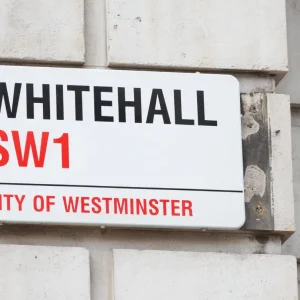
Broadband is going to be increasingly key to Britain’s future, especially as it seeks to reinvent itself as a digital commerce giant outside the European Union.
Whatever form leaving the European Union takes, for an economy such as the UK’s which is overwhelmingly dominated by services the digital path seems like the best path. These high-tech applications will need good connectivity.
The most pressing question is what needs to be done from all stakeholders, including government, to ensure that the infrastructure the country needs is rolled out.
There are a range of different approaches being advocated and the issue is high on the political agenda. In the Conservative Government, Prime Minister Theresa May has replaced Ed Vaizey as Minister for the Digital Economy with Matt Hancock, who has not so far announced any changes to his brief.

The Superfast Broadband programme to expand coverage has been orchestrated by Broadband Delivery UK, which has worked with BT to deliver the connectivity.
The Government also supported the Super Connected Cities voucher scheme which has subsidised provision of broadband to small businesses.
In November, then-Prime Minister David Cameron set out plans for a universal service obligation (USO) for access to fast broadband, in which all UK citizens will have the legal right to request a 10 Mbps connection by the end of the current parliament.
In the opposition Labour party, leader Jeremy Corbyn in August announced a Digital Democracy manifesto, which pledged to deliver high speed broadband and mobile connectivity for all households and organisations in the UK.
As for the industry itself, it is becoming increasingly activist. On 8 September, the Independent Networks Corporation Association (INCA), which represents ‘Altnets’ (alternative broadband infrastructure providers to BT), launched the Building Gigabit Britain report.
This called on the Government to implement a target of 80 percent of businesses and homes to have access to pure fibre connections by 2026. Currently the figure is less than 5 percent.
BT responded to the report by saying that the UK is in a “strong position with nine out of ten homes able to access superfast broadband and businesses across the country able to order gigabit speeds should they wish.” However, on fibre, the figures are bleak: at the end of 2015 the UK ranked 30th out of OECD nations on fibre coverage to premises.
The members of INCA, including CityFibre, Hyperoptic, Gigaclear, Relish, ITS and Warwicknet as well as Vodafone and Sky, gave several other recommendations, including reviewing advertising guidelines to ensure that consumers and businesses understand the fibre products being offered.
Underpinning all of this is the championing of fibre, but in particular fibre-to-the-home (FTTH) connectivity, also known as fibre-to-the-premises (FTTP).
Fibre is already used in UK infrastructure, but it does not usually carry the entire connection between the premises and the backbone.
For BT, which is trialling a connectivity standard using existing copper infrastructure called G.fast, the focus on fibre is overblown.

“Openreach will be deploying more FTTP in the coming years but it is important to note that it is only one technology amongst many and that other technologies can also deliver ultrafast speeds,” said BT in a statement responding to the INCA report.
BT said that deploying a range of technologies “helps to ensure a rapid deployment as well as low prices for consumers and businesses.”
It said that its strategy aimed to get the “fastest possible speeds to the largest number of people in the shortest amount of time – and at an affordable price.”
Ronan Kelly, President of the FTTH Council Europe and CTO of EMEA & APAC, tells CBR that G.fast, which he calls a “very versatile copper access technology” makes sense for BT.
“For operators like BT who have a large proportion of cabinet infrastructure within 300m of subscribers, they can deliver faster services with G.fast.”
For the long-term, though, the FTTH Council officially advocates rolling out as much FTTH as possible.
If the Government does choose to implement an 80 percent target for FTTH, the mechanism by which this would be achieved is also up for debate, since there are a number of potential role models for Britain’s fibre roll-out.
In Spain, the country became one of the most fibre-connected countries in Europe through a small regulatory change, as Kelly explains.

“Pre-2009, every product that Telefonica sold in the market, they had to make available to wholesale competitors on equal basis,” says Kelly.
However, the Spanish regulator changed the rules so that any services sold on the back of a 30 Mbps broadband connection were no longer subject to those wholesale rules.
Since up to that point broadband services had been delivered over ADSL technology, which has a maximum speed of 24 Mbps, the incumbent Telefonica embarked on a large FTTH build-out.
Vodafone and Orange decided that they had to build their own fibre services to compete.
Spain now has over 60 percent of homes passed by fibre, meaning that if requested the homes could get directly connected by fibre.
In France, a different model was used. Rather than cutting regulation to incentivise investment, the Government matched private spending to de-risk the investment.

France has almost 20 percent of homes passed.
Naturally, as Kelly explains, the FTTH Council is keen to repeat these successes elsewhere.
But could either, or both, models work in the UK?
The INCA actually makes the case that the roll-out could be achieved without public subsidy on a commercial basis if the regulatory conditions are right: another key focus of the report, which suggests axing planning restrictions on infrastructure building.
Mark Collins, Director of Strategy at CityFibre, tells CBR that in the recent past the subsidy system has been dominated by BT receiving subsidies.
“That’s continued to propel a reliance on BT’s copper infrastructure.”

Collins says that the Altnets have not been getting into the public subsidy debate but instead have been “showing that there is a real commercial appetite for long-term infrastructure investors to be investing in fibre networks.
“Because there is an appetite for private sector investment, we feel the focus should be on providing the right conditions for that investment.”
While Collins says that there may be a role for government invention, he believes that the UK could go a long way towards these targets without a subsidy.
“Where [subsidies] are needed, it’s important that this is done on a level playing field where alternative providers can access it and it’s not dominated by BT,” he says.
Collins suggests that a Spain-style model could work in the UK, but says that UK regulator Ofcom faces a difficult “balancing act” between regulating to boost service competition and encouraging providers to build alternative networks.
In the last ten years, BT has lost around 70 percent of its retail market, according to Collins, since Openreach was established to provide wholesale broadband products to service providers on an equal basis. This constitutes vibrant service competition on BT’s infrastructure.
The next question for Ofcom, though, is about creating a market where these service providers go to other wholesalers aside from Openreach, such as CityFibre.
The chosen method and even whether the 80 percent target is adopted by the Government remains to be seen.
But with questions about the UK’s future more pressing than ever in the context of the EU Referendum result, it is important that the country gets to grips with the broadband requirements before it is too late.






